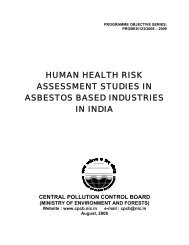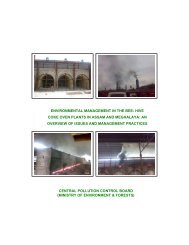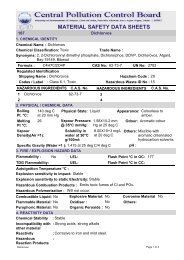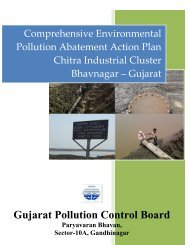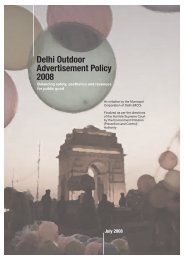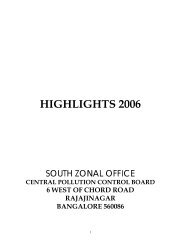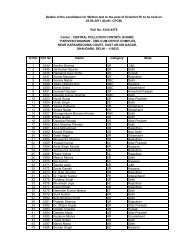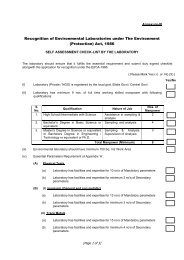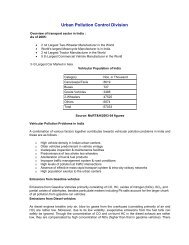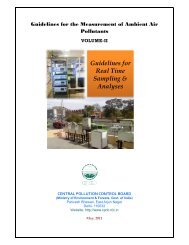Q ST QUA TAT ALIT US O TY IN OF W N IN WA NDIA ATER A- 2 R ...
Q ST QUA TAT ALIT US O TY IN OF W N IN WA NDIA ATER A- 2 R ...
Q ST QUA TAT ALIT US O TY IN OF W N IN WA NDIA ATER A- 2 R ...
You also want an ePaper? Increase the reach of your titles
YUMPU automatically turns print PDFs into web optimized ePapers that Google loves.
Accelerating population growth and unsustainable consumption and production patterns haveincreased the demand for water.In the greater competition for water, ecosystems and biodiversitytend to be the losers. But people are the losers too. Activities that reduce biodiversity jeopardizeeconomic development and human health through losses of useful materials, genetic stocks, andpotential medicines. As ecosystems and biodiversity get degraded, their ability to lend resilienceto the biosphere declines, and communities and human health suffer. The decline in the quantityand quality of water flow has reduced the productivity of many terrestrial, aquatic, and coastalzone ecosystems and led to loss of biodiversity. In remote areas, the degradation of ecosystemshas devastated fishing, agriculture, and grazing and undermined the survival potential of ruralcommunities relying on these activities.Against a national per capita annual availability of 2,208 m 3 of water, the average availability inBrahmaputra and Barak is as high as 16,589 m 3 , while it is as low as 360 m 3 in the Sabarmatibasin. The per capita annual water availability for the rest of the country, excluding Brahmaputraand Barak basin, works out to about 1,583 mre 3.3.1).Water availability less than 1,000 m 3 per capita is considered by international agencies asindicating scarcity conditions.Cauvery, Pennar, Sabarmati, east flowing rivers and west flowingrivers are some of the basins with scarcity conditions.In majority of river basins, currentutilization is significantly high and is in the range of 50-95 per cent of utilizable surfaceresources. But, in rivers such as Narmada and Mahanadi, percentage utilization is only 23 and 34per cent respectively. In several basins, there is also an overdrawal of groundwater leading tolowering of groundwater tables and even salt water incursions. If the average national per capitaavailability of 2,000 m 3 is to be maintained, given the bourgeoning population, the only river inNorth India with significant surplus water to meet future needs of the country is theBrahmaputra. Since Bangladesh also draws water from this river, it may not be easily possible totap its full potential. In peninsular India, the Godavari, Brahmani, Mahanadi and Narmada,besides regions of Tapti and Tadri may have surplus water. Inter-linking of rivers has beenproposed to address the spatial challenge of water availability. Besides its questionable technoeconomicfeasibility, the associated ecological damages of river linking may be irreversible.While at the country level, there may not appear to be an immediate problem of wateravailability, several basins (e.g. Sabarmati) are already under severe stress and face scarcitysituations. With increasing demands, the situation is only going to be aggravated unlessappropriate basin level measures are attempted now.1.6 Water PollutionThe key challenges to better management of the water quality in India are temporal and spatialvariation of rainfall, uneven geographic distribution of surface water resources, persistentdroughts, overuse of ground water and contamination, drainage & salinisation and water qualityproblems due to treated, partially treated and untreated wastewater from urban settlements,6



